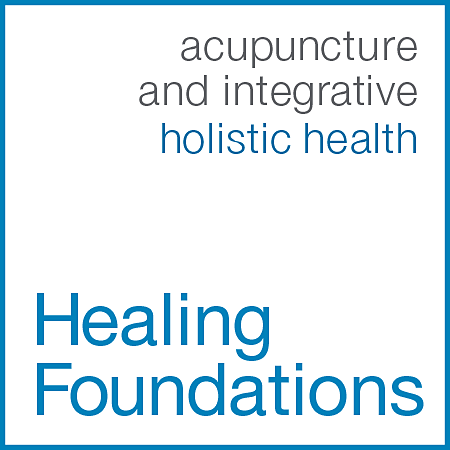Rebecca Gemperle, Healing Foundations Co-Founder
It should come as no surprise that Rebecca received regular acupuncture and complementary therapy treatments throughout her two pregnancies.
If you're a regular at Healing Foundations, chances are good you've crossed paths with an obviously-expectant mom, or maybe even a baby or two in the Healing Foundations lobby. Since opening six years ago, the clinic has provided pre- and post-natal care to many dozens of moms and their little ones.
Clinic co-founder Rebecca Gemperle says that treating fertility and pregnancy directly correlates to the holistic nature of acupuncture. "Simply put, our treatments support a woman's body so it can produce an optimal environment for conceiving and carrying a baby. We work on managing stress and general wellness, but also specific issues they may be experiencing before they become pregnant— like regulating monthly cycles."
Historically, about half of Healing Foundations' prenatal patients have had or are receiving fertility support like IVF (in-vitro fertilization) or IUI (intrauterine insemination). "We work closely with the patient to minimize the sometimes considerable side-effects of hormones and medications required in those processes, and to prepare and support her body for egg retrieval or embryo transfer. Certain things happen at particular times in the process, and each acupuncture treatment reflects each step and what comes next." Rebecca adds that "Once a patient becomes, treatments focus on supporting the mother to allow her body to best provide for the growing embryo."
"Babies are adorable. They're fun.
But also, it makes women check in and take care of themselves.
It's part of why I like doing fertility work."
"Western medicine does have technological advantages that we don't," Rebecca points out. "Important things that affect a woman's ability to conceive can be discovered with blood and hormonal testing for example, or the means to diagnose PCOS (polycystic ovary syndrome)— those diagnostics that are beyond the scope of our practice. Most doctors are encouraging when it comes to their patients seeking acupuncture because what we do supports their efforts. The difference between ART (Assisted Reproductive Therapy) working or not can depend upon the baseline of their patient. That's where we come in— helping to improve the odds of conception holistically, without additional drugs or side effects. And of course, when an OBGYN or reproductive endocrinologist (fertility doctor) does diagnose a problem, we devise treatments to assist with those issues as they arise."
As the mother of two young girls, Rebecca understands her patients well. "The drive to have a baby is very strong," she says quite dryly. "When you want a baby, you want a baby. Babies are adorable. They're fun. But also, it makes women check in and take care of themselves. It's part of why I like doing fertility work. Addressing what your stressors and lifestyle are, and how it affects your chances of growing your family become a big factor. Our approach includes the obvious basics like managing stress levels, promoting proper sleep and diet while treating the symptoms and effects of pregnancy."
Regular acupuncture treatments can help with a number of conditions some expectant mothers suffer: morning sickness, back and joint pain, fatigue, mood swings, heartburn, constipation, plus preeclampsia (pregnancy-induced high blood pressure) and gestational diabetes.
"Acupuncture is sought out most commonly to treat morning sickness, but for the best results over the course of a pregnancy, we can create the most benefit by starting before someone hopes to actually conceive," reports Rebecca. "If you're thinking of trying, that's the time to begin acupuncture treatments. It takes about three months of 'prep work' to create an optimal environment for conception — quality follicles, appropriate hormone levels, a good endometrial layer— all these things take time to get ready." She's quick to add that acupuncture for reproductive health isn't just an issue for women. "Research shows that acupuncture is really helpful for men, when it comes to the health and viability of sperm. Plan ahead," she advises.
"All of us at Healing Foundations have worked with hopeful parents excited about growing their families. We see the whole process, and encourage continuing care after the big arrival. We also see plenty of little ones for pediatric acu-therapy and herbal remedies, and even offer infant massage instruction to help keep everyone healthy and happy," says Rebecca, with a smile. "And of course, that's wonderfully satisfying."
Link: Influence of acupuncture on the pregnancy rate in patients who undergo assisted reproduction therapy
Link: Study Shows Alternative Treatment May Help Male Infertility Problems
Link: Correction of Breech Presentation: A Randomized Controlled Trial






